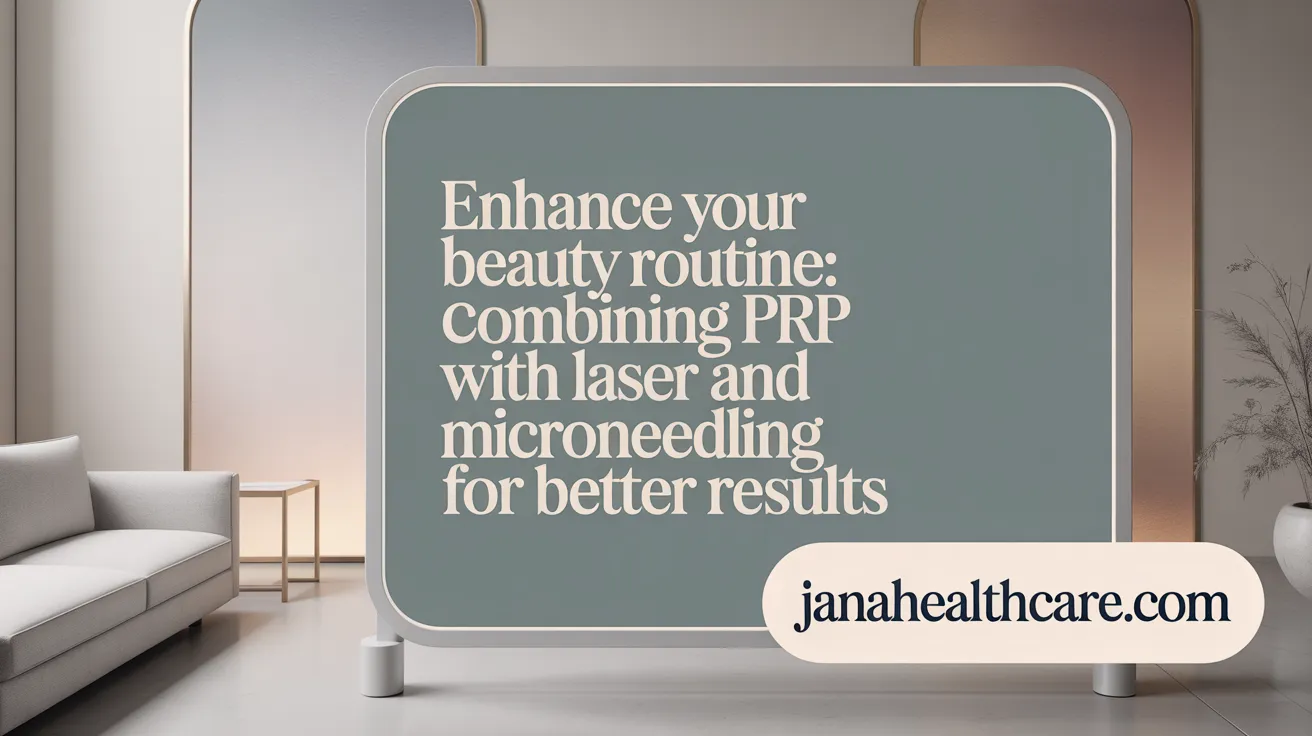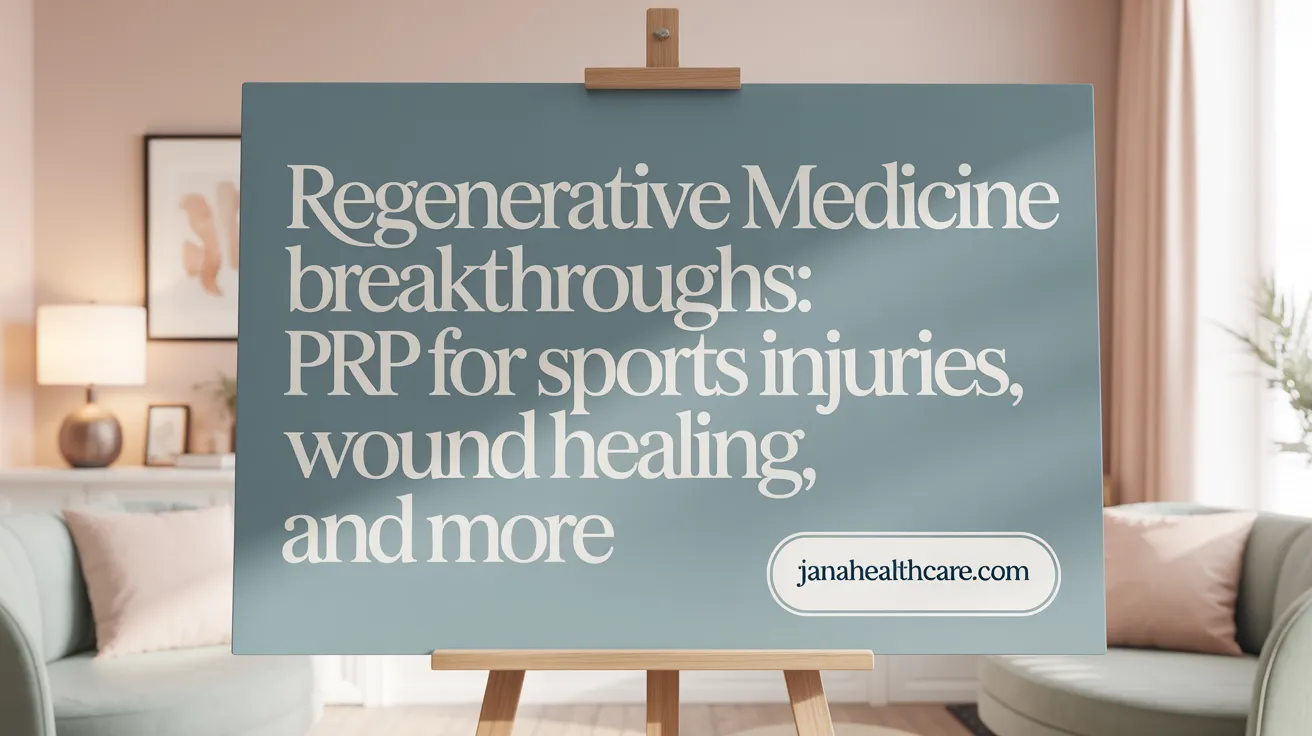The Revolution of PRP in Medicine and Aesthetics
Platelet-Rich Plasma (PRP) therapy is rapidly gaining recognition for its dual impact in both aesthetic enhancements and medical treatments. Utilizing a patient’s own blood to stimulate natural healing, PRP harnesses a rich concentration of growth factors to promote tissue regeneration. This narrative explores how PRP is reshaping cosmetic dermatology and revolutionizing orthopedic and gynecological care, offering a safe, innovative, and personalized approach to boosting health and beauty.
Key Facts on PRP in Aesthetic and Medical Treatments
- PRP promotes skin rejuvenation by stimulating collagen synthesis through its high concentration of growth factors.
- PRP can be combined with treatments like laser, microneedling, and lipofilling to enhance healing and aesthetic outcomes.
- In hair restoration, PRP stimulates hair follicle proliferation and is effective for male and female pattern baldness.
- PRP therapy is considered safe, using the patient’s own blood, thus minimizing risks of allergic reactions and immune rejection.
- In musculoskeletal injuries, PRP accelerates healing by promoting collagen production, angiogenesis, and reducing inflammation.
- In gynecology, PRP aids in wound healing, tissue regeneration, and potential ovarian rejuvenation, improving reproductive success.
- Most PRP side effects are mild and include pain, redness, swelling, which usually resolve quickly.
- PRP’s clinical evidence supports its use in pain relief and tissue repair in conditions like tendinitis and osteoarthritis.
- While promising, many PRP applications are still investigational, and further clinical trials are needed for standardized protocols.
- PRP triggers biochemical activity that enhances vascularization, cellular growth, and remodeling beneficial for cosmetic and medical healing.
1. Aesthetic Enhancements: Revitalizing Skin and Hair Naturally

How does PRP contribute to skin rejuvenation and wrinkle reduction?
Platelet-Rich Plasma (PRP) Skin Rejuvenation stimulates skin rejuvenation mainly through its rich concentration of growth factors such as platelet-derived growth factor (PDGF), vascular endothelial growth factor (VEGF), and transforming growth factor-beta (TGF-β). These proteins activate fibroblasts and stem cells, encouraging collagen synthesis and cellular proliferation. This biochemical activity promotes angiogenesis — the formation of new blood vessels — and tissue remodeling, key processes that improve skin texture, increase elasticity, and reduce the appearance of wrinkles and pigmentation. Patients often experience enhanced skin tone and volume, with improvements noted especially in areas prone to fine lines and discoloration (PRP Growth Factors, Collagen Synthesis and Angiogenesis in PRP, PRP Effects on Wrinkles and Pigmentation, Endogenous Hyaluronic Acid Stimulation by PRP, Periorbital Rejuvenation Using PRP).
Can PRP be combined with other aesthetic procedures?
Yes, PRP is versatile and frequently used alongside other aesthetic treatments, greatly enhancing overall outcomes. Common combination therapies include:
- Fractional CO2 Laser: PRP Combination Therapies show that PRP speeds up healing time and reduces post-laser redness, helping patients experience quicker recovery and better skin renewal.
- Microneedling and Dermarollers: When paired, microneedling with PRP effects intensifies collagen production triggered by microneedling, improving scar attenuation and skin smoothness (PRP and fractional CO2 laser treatment, Microneedling with PRP.
- Lipofilling: PRP enhances fat graft survival by stimulating vascularization, leading to improved skin contour and volume after the procedure (PRP combined with lipofilling.
Such combinations not only deepen skincare benefits but also boost patient satisfaction due to faster results and less downtime.
What role does PRP play in hair restoration?
PRP role in hair follicle regeneration and PRP injections for hair growth are widely recognized for their ability to stimulate hair growth, particularly through proliferation of dermal papilla cells at the hair follicle base. This mechanism helps treat conditions such as male pattern baldness by promoting thicker, healthier hair shafts. PRP therapy is also used adjunctively in hair transplant procedures to improve graft survival and accelerate follicle regeneration (PRP for Hair Loss and Hair Transplants, PRP for Hair Loss).
Treatment effects typically last between 18 to 24 months, with maintenance sessions recommended annually to sustain hair density and scalp health (Platelet-Rich Plasma Injection overview. PRP offers a natural alternative or complement to pharmacological hair loss treatments, suitable for both men and women.
Is PRP therapy safe for aesthetic uses?
PRP's safety profile is strong due to its autologous nature—it uses the patient’s own blood, virtually eliminating risks of allergic reactions or immune rejection (PRP safety and immune response, Safety and Side Effects of PRP). The most common side effects are mild and transient, including:
- Pain or tenderness at injection sites
- Redness and swelling
- Minor bruising
These symptoms usually resolve within a few days. The minimally invasive procedure requires no significant downtime, making it attractive for patients seeking natural, low-risk aesthetic enhancements (Safety in PRP treatments).
Overall, PRP is a promising regenerative approach that revitalizes skin and hair by harnessing the body's inherent healing abilities, often enhanced through combination therapies that tailor treatments to individual patient needs.
2. Medical Marvels: PRP’s Role in Healing Musculoskeletal and Gynecological Conditions

How does PRP assist in healing musculoskeletal injuries?
Platelet-rich plasma (PRP) facilitates healing by concentrating a patient's own growth factors in platelets and proteins that stimulate tissue regeneration. When injected into injured areas such as tendons, ligaments, muscles, or joints, PRP promotes collagen synthesis, angiogenesis, and extracellular matrix remodeling. Essentially, it activates fibroblasts and encourages cell proliferation, accelerating repair. This approach has shown benefits in conditions like tennis elbow, rotator cuff tears, chronic tendinosis, and osteoarthritis by reducing inflammation, decreasing pain, and improving function. Clinical evidence suggests PRP often allows earlier return to activities compared to traditional treatments.
What are PRP’s gynecological applications?
In gynecology, PRP is applied to enhance wound healing, skin lesion recovery, and tissue regeneration. It has been used effectively for treating skin ulcers and scars, vulvar dystrophy such as lichen sclerosus, and post-surgical healing following vulvar cancer operations by reducing infection and necrosis rates. PRP also shows promise in treating genital fistulae with notable success rates in minimally invasive procedures. Additionally, in reproductive medicine, PRP is investigated for ovarian rejuvenation in women with premature ovarian failure, stimulating follicle development, and improving endometrial thickness in cases of repeated implantation failure, potentially increasing pregnancy rates.
Is PRP considered safe in medical treatments?
PRP therapy boasts a low risk profile because it uses autologous blood, minimizing allergic or immune reactions. The most common side effects are mild and localized, including soreness, bruising, redness, or slight swelling after injections. Serious complications such as infections or nerve damage are rare when procedures follow sterile protocols and are performed by qualified clinicians. Despite its safety, many PRP applications remain investigational and lack full FDA approval, highlighting the need for further controlled trials to establish standardized protocols and confirm long-term outcomes.
What clinical evidence supports PRP use in medicine?
Multiple studies support PRP's efficacy in musculoskeletal care, demonstrating notable improvements in pain relief and functional outcomes for tendonitis, osteoarthritis, muscle tears, and ligament injuries. For instance, PRP has outperformed corticosteroids in treating tendinopathies and has shown superior results to hyaluronic acid injections in knee osteoarthritis. In gynecological contexts, research indicates accelerated wound healing, lowered post-surgical complications, and promising reproductive benefits like enhanced ovarian function and higher success rates in in vitro fertilization after PRP treatments. However, wide-scale validation and long-term data remain areas for ongoing investigation.
| Aspect | Description | Clinical Impact |
|---|---|---|
| PRP Mechanism | Release of growth factors that stimulate tissue regeneration and modulate inflammation | Accelerates healing and tissue repair |
| Orthopedic Applications | Treatment of tendon, ligament, muscle injuries, and osteoarthritis | Pain reduction, improved mobility |
| Gynecological Uses | Healing of ulcers, vulvar dystrophy, cancer surgery recovery, genital fistulae repair, ovarian rejuvenation | Faster recovery, enhanced reproductive outcomes |
| Safety Profile | Low risk, autologous origin minimizes complications; mild side effects common | Safe in clinical practice with rare adverse events |
| Evidence Status | Supported by several clinical studies but considered investigational; need for further research | Promising yet requires validation |
PRP: Bridging the Gap Between Beauty and Healing
The transformative potential of platelet-rich plasma lies in its remarkable ability to enhance natural healing and regenerative processes across diverse medical and aesthetic fields. From restoring youthful skin and revitalizing hair to repairing soft tissue injuries and supporting gynecological health, PRP offers a versatile, patient-friendly therapy harnessing the body's own biology. While ongoing research and standardization are vital to fully unlock its capabilities, PRP’s dual role as both an aesthetic enhancer and a medical marvel heralds a promising future in integrated care and personalized medicine.
